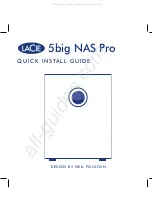
19 Operation on an ISDN Access
ARGUS 152
209
TE simulation
In the Access Menu (see page 208), select the desired simulation mode:
NT simulation
In the Access Menu (see page 208), select the desired simulation mode:
19.2 Initialization phase followed by a B channel Test
Initialization on a BRI S/T or U -interface access
The ARGUS will begin the initialization after taking over the existing, confirmed settings or
new settings for the type of access and mode. Next the ARGUS will setup Layer 1. While it
is setting up Layer 1, the "Sync/L1" LED above the display will blink. If the ARGUS cannot
setup Layer 1, it will display the message “No net”. When the ARGUS is operated on a
U interface access, it can take up to 2.5 minutes to activate Layer 1. As soon as Layer 1 is
successfully setup, the "Sync/L1" LED will light continuously.
Once Layer 2 has been setup, the "Rx/Tx/L2" LED will light.
If both modes (P-P / P-MP) are found when Layer 2 on the D channel is checked,
the mode must be selected manually (see page 209).
If everything has been detected without errors, the ARGUS will display the type and mode
of access found. Additionally, a qualitative assessment of the level will be displayed.
The ARGUS will automatically determine the protocol (in both TE and NT mode) or use the
protocol set manually (see page 213 protocol). On a bilingual access, the ARGUS will use
the DSS1 protocol.
- TE automatic
On an S-Bus interface or U interface access, the ARGUS will automatically determined
the D channel Layer 2 mode (P-P or P-MP). If the ARGUS determines that the access
supports both modes, a configuration menu will open in which you can select the
desired Layer 2 mode.
- TE P-P (point-to-point) or TE P-MP (point-to-multipoint)
Afterwards, the access and the protocol stack will be initialized in accordance with the
selected setting.
-
NT P-P (point-to-point) or NT P-MP (point-to-multipoint)
Afterwards, the access and the protocol stack will be initialized in accordance
with the selected setting.
















































